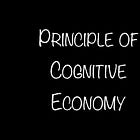Atomic Knowledge #11: Creative Cliff Illusion
Creativity thrives on persistence, learn to turn early hesitations into the launchpad for revolutionary ideas.
⏱️ Reading Time ≈ 1 min
Introduced by Lucas and Nordgren (2020) and rooted in decades of creativity research, the Creative Cliff Illusion is a cognitive error that makes us believe our creativity dwindles over time – that our initial ideas are inherently superior to later ones. This phenomenon stems from underestimating the role of persistence in creative processes and mistaking productivity for creativity. Early on, ideas flow effortlessly through conventional associations; as this rapid production slows, the ensuing difficulty is misinterpreted as a decline in creativity, when it actually signals the emergence of deeper, more original insights that demand greater cognitive effort. For instance, a study on both professional and amateur comedians revealed that those who were convinced their first jokes were best tended to abandon the creative process prematurely, resulting in a lower quality of humorous output. Recognizing and countering this bias is essential. Practical strategies include extending ideation sessions, implementing “idea quotas” to boost persistence, and retrospectively assessing idea quality. In this way, the initial slowdown is not seen as a decline but as the precursor to truly innovative breakthroughs.
Make the most of it! Until next time, S.
Deepen Your Knowledge
Lucas, Nordgren, 2015 - People Underestimate the Value of Persistence for Creative Performance (paper)
Lucas, Nordgren, 2020 - The Creative Cliff Illusion (paper)
The Creative Cliff Illusion: What It Is and What to Do About It (article)
When Silver Is Gold: Forecasting the Potential Creativity of Initial Ideas (paper)
Previously on Atomic Knowledge
Disclaimer: whenever I encounter an interesting concept—whether it’s a theory, speculative idea, formula, or law—I strive to deeply understand it and see how it connects within my knowledge network. Once I’ve grasped its essence, I distill it into a concise, no-frills note: simple, atomic, and memorable. To keep things sharp and focused, I stick to a “lazy” limit of 1,000 characters, give or take. These atomic notes, often described as mental models, have revolutionized how I understand and link ideas, fostering a more organic and interconnected expertise. Believing in the power of sharing, I’ve decided to make them public. Think of these notes as tools: mental models to keep in your back pocket for quick use or prompts to deepen your understanding when inspiration strikes. Subscribe if you’re curious—you won’t want to miss them.









